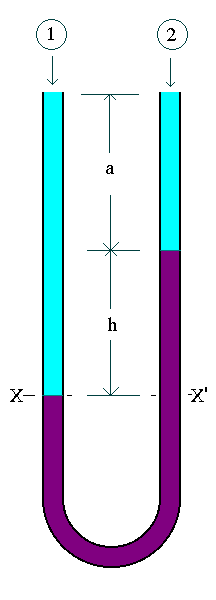Simple U - tube Manometer
Completion requirements

Equating the pressure at the level XX'(pressure at the same level in a continuous body of fluid is equal),
For the left hand side:
Px = P1 + \(\rho\)g(a+h)
For the right hand side:
Px' = P2 + \(\rho\)ga + \(\rho\)mgh
Since Px = Px'
P1 + \(\rho\)g(a+h) = P2 + \(\rho\)ga + \(\rho\)mgh
P1 - P2 = \(\rho\)mgh - \(\rho\)gh
i.e. P1 - P2 = (\(\rho\)m - \(\rho\))gh.
The maximum value of P1 - P2 is limited by the height of the manometer. To measure larger pressure differences we can choose a manometer with heigher density, and to measure smaller pressure differences with accuracy we can choose a manometer fluid which is having a density closer to the fluid density.
Last modified: Wednesday, 12 February 2025, 12:19 PM
